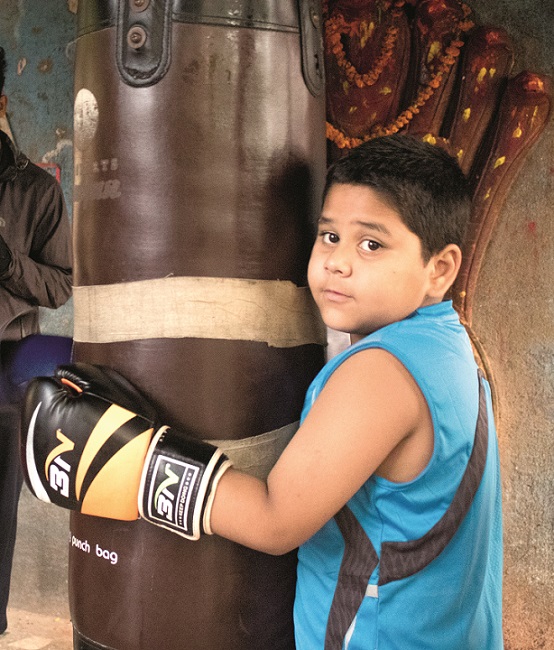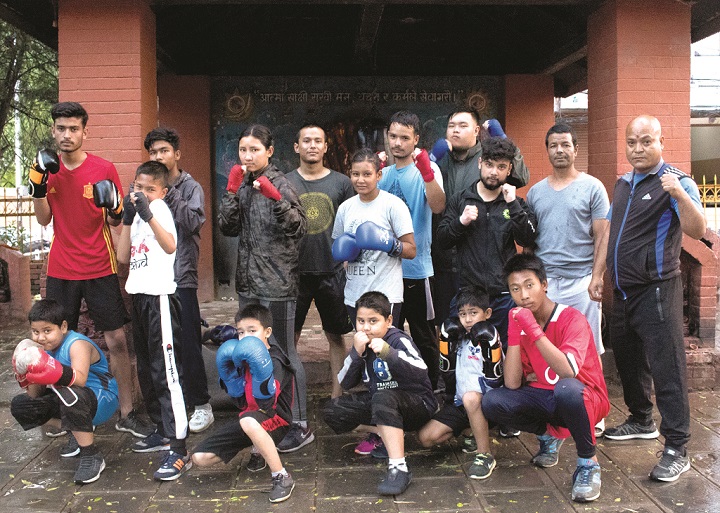Little bundles of joy
Those of us who came of age in the 1990s and 2000s will never forget the unmitigated thrill of popping Orange Balls, those round orange sweets in transparent wrappers with yellow letters. The memories still make us drool. Sujal Foods has now stopped making these delicious delights, spelling an end of an era when the sweet Orange Balls and their close cousins sweet-and-sour Rimjhim Balls (also known as Black Balls) were the undoubted kings of the Nepali sweet market. Cheap too, as four could be had for a rupee. (APEX recently hit the streets in search of these candies but in vain.) There is a Facebook group, with more than 10,000 followers, dedicated to these two candies. People still post on Facebook and Reddit querying about their origin, recipe, and writing their personal stories. We bring to you some old fans of these candies and their incredible memories.
Elena Gurung, Video creator, 19
I and my cousins were very naughty when we were young. Just to make us sit down for a while, my grandmother used to ask us to draw. If the drawing was nice, she would give us 25 paisa each. It was a big deal for us then because we could get one Orange Ball for that money. When our grandma gave us money, all of 75 paisa, the three of us cousins would then run to the store. One of us would get a Black Ball and the other two would get an Orange Ball each. We would divide the spicy Black Ball into three pieces, eat it, and only then eat Orange Balls.
Sabin Karki, Dancer, 23
I still remember getting four Orange Balls for one rupee when I was little. One of my friends had brought like a bunch of Orange Balls to distribute in school on his birthday. I was amazed! He let everyone in the class take as many as we wanted. That day was amazing and remains a fond memory.
Saurav Chaudhary, Actor, 27
Four-for-One: Perhaps the best deal I could have gotten at “Maila uncle ko pasal” for those candies. I vividly remember my friends showing off their colored orange tongues. The funniest part was making ‘colas’ and orange juice out of those candies, which is the best juice I have ever had. I still wish we could get the same candies with same taste and the same type of friends with the same innocence.
Raj Shah, Sarwanam Theater Director, 32
An entire packet of Rimjhim Balls or Orange Balls used to cost Rs 14. We, as children, could not afford it. One candy used to cost Rs 0.25 but for Rs 14, we could get more in quantity. So, my friends and I used to form a group of 5-6 people and each of us would contribute Rs 3 for a packet of that candy. I think it was the cheapest and most famous candy of our generation. We used to take off its wrappers and put the candies in our pockets. Then we would secretly eat it during class hours.
Swoopna Suman, Singer, 23
I was in my hostel back then. One night, I saw a friend of mine take out some candies from his black box. He handed me almost half a packet of Lacto, Orange Balls and Black Balls. I ate them all, at once. Right before I fell asleep, I felt a light sting on my left cheek. The next morning, my left cheek was totally numb. Next thing I realized my left eyelid wouldn’t blink. I don’t know if it were those candies or my body, but I got half of my face paralyzed for the next 3 months.
Kristie Rai Potter, 28
Whoever made Orange Balls is a star. I think at least 60 percent of my childhood body was made out of Orange Balls, haha.
Pratik Dhakal, 26
I used to buy 30 Orange Balls at once and dissolve them in water to make orange juice. And believe me, it tasted great, just like orange juice. That was me when I was just five! Sweet memories, indeed.
Neeru Tharu, 18
Before Orange Balls were 25 paisa a pop and I now hear they are Re 1 per piece. Now this candy is difficult to find. Maybe it is still available at Bhatbhateni. [Ed: No it is not]
A pugilist’s paradise
Passing by the idyllic Nagpokhari pond amidst Naxal’s hustle and bustle, you notice a bunch of boxing athletes and enthusiasts working out diligently every dawn and dusk. They are members of Naxal Boxing Club, whose training reminds you of scenes from ‘Rocky’ and ‘Million Dollar Baby’ that made some of us want to throw a punch or two. One day, I carefully observed them going through their routines, and it captivated me. They were continuously completing rounds which would not be easy for an average person, even without the sweltering heat. Soon they shifted gears and did their jumps between the cones lined up around them. Someone who looked like their coach then blew his whistle to signal a break.

Starting young
I approached coach Raj Krishna Maharjan to ask him about the athletes’ workout. He went into detail about how the routine consisted of a mix of intensive boxing exercises and a 25-minute jog around the pond. By then, the athletes had started their run. Maharjan firmly told a kid, who did not even look 10, to quicken his pace. I asked him if the child was old enough to be there.
“These kids are preparing for future tournaments. This is how most people start and we help them throughout,” said Maharjan, who also started young at the club. He mentioned how the club was known as Naxal Yuwa Mandal and Boxing Club since its inception in the mid-70s by late Garud Dhwaj Shahi, in what was one of only four private boxing clubs at the time. A structural change led to it being registered as Naxal Boxing Club around six years ago.
Maharjan, 42, says he is giving back to the club, in what is his seventh year as a coach. He recalled the days he competed in tournaments and won medals. He proudly mentioned that some of the current members have already started preparing for junior championships. He pointed to Sushma Tamang, a 17-year-old athlete who is waiting for her 12th grade results and has been with the club for the past three years. When I asked Tamang how she found out about the club, she told me she lived nearby and used to see people practicing. Her interest shot up when her elder sister went abroad through the club and won medals. Tamang exuded confidence and said she was looking forward to the upcoming local youth competitions.
While athletes like Tamang are working towards a career in boxing, there is no shortage of people who have joined the club just to have some fun and stay fit. Nabin Dhakal, a 19-year-old engineering student is one such example. He chose it over modern gyms and training centers because of its open space and affordable fees. “I even tried out the club at Dashrath Rangasala. But because of the reconstruction going on there, the sessions were irregular. Here, I do not have to worry about that,” he said.
Beyond the physical
While the trainees learn much about boxing, I couldn’t help but notice the bond they had forged with each other and with the coaches. President Navin Tandukar, who also coaches the morning sessions, says the club instills a sense of responsibility in its members. “They will all be contributing to society in one way or another. Some have already gone on to represent our nation abroad, while others are serving the country by joining its security services,” said Tandukar.
Like Maharjan, Tandukar also used to be a member of the club and represented it in various tournaments. Now they have both decided to dedicate themselves to the club. Sushma Tamang aspires to do the same at some point in the future. “The club has taught me how to be fearless and believe in myself. I want to contribute to it later, however I can,” she stressed.
The club is run mostly on donations and contributions. Both Tandukar and Maharjan said how they, along with a few other senior members, have been paying for the club’s expenses from their own pockets. “We understand that everyone interested may not be able to afford it. While we ask people who can afford the Rs 1,000 membership fee to pay up, we also try to accommodate those who aren’t as well off,” said Maharjan.
The coaches have been forgoing their salaries, and with the benefactors, have instead been providing gloves and bandages to the athletes who cannot afford them.

A culture of its own
The Naxal Boxing Club has withstood the waves of modernization and built an illustrious legacy, becoming an inseparable part of Nagpokhari and of Naxal at large. Even without extravagant boxing equipment or carefully regimented diet plans, its athletes are able to give stiff competition to those with such privileges. The secret seems to be the collective dedication of the athletes, coaches and well-wishers who have kept the boxing culture alive and thriving.
Despite the financial pressure, with determined coaches like Maharjan and Tandukar and promising athletes like Sushma Tamang, the club seems poised to remain viable and to continue filling the Nagpokhari air with the noise of staccato thuds of punches for a long time to come O
The Ravibhawan jewel
To be honest, we were a little apprehensive about trying a restaurant in Ravibhawan, a place not at all known as an ‘eat out’ zone. But the Perfect Foodland at the Ravibhawan Height managed to prove us wrong with its terrific food, service and ambience. Perfect is a multi-cuisine restaurant housed in a two-storey modern building. The interiors are elegant, pleasing, and again perfect while you relish the food.
There are multiple seating arrangements, a separate family room to host small parties and surprisingly, also a small stage where local artists do acoustic sessions on weekends. Besides the chef’s specials, we wholeheartedly recommend the whole fish. Oh my, the sauce on that dish is finger-licking good!
THE MENU
Chef’s Special:
- Chicken Ala Que
- Dragon Chicken
- Crispy Prawn
Opening hours: 7:30 am to 10 pm
Location: Ravibhawan
Cards: Accepted
Meal for 2: Rs 2,000
Reservations: 014672076
It's Time To ....
EXPLORE ANCIENT KALASH IN KATHMANDU
Kalash (Gha) is a traditional Newar ‘material culture’ that dates back at least to the Licchhavi period. What can be better than a walking tour of Kathmandu valley to catch a glimpse of the rich ancient heritage of Kalash, and explore its connection with the people of old Kathmandu? As this free walking tour is conducted in Nepali, it may not be relevant for people who do not understand the language. The SherpaShah Heritage fund-facilitated tour that happens every Wednesday starts at 2:30 pm from Sigal and ends at 4 pm near Basantapur, Kathmandu. Call 9843241490 for details.
RISE HORSE RIDE IN POKHARA
Horse riding is a great way to explore the beauty of the Pokhara valley. If you wish to go to World Peace Stupa or Sarangkot, you may want to travel on a horse. The Pokhara Horse Riding Tour starts from Lakeside and ends at Sarangkot or World Peace Stupa, as per your choice. ‘Pokhara Tour, Pokhara Sightseeing & Adventure Activities’ organizes these tours every morning starting 7 am. The tour is for 6 hours and costs around Rs 10,000. To book, call 9802014557.
LEARN TO PLAY SARANGI IN LALITPUR
Project Sarangi Center has opened registrations for Sarangi classes for its July intake. Located at the Arun Thapa Chowk in Sanepa, this music lesson and instruction school has been providing formal classes to promote the melody of the handmade Nepali Sarangis. The school also organizes various “Sarangi Bhela” musical nights for the purpose of awareness and recreation through the mesmerizing traditional music. The project is ideal for students with an interest in traditional Nepali music, specifically the “Sarangi”. Classes run from 10 am to 6 pm on workdays. For details, contact 015553511.



















